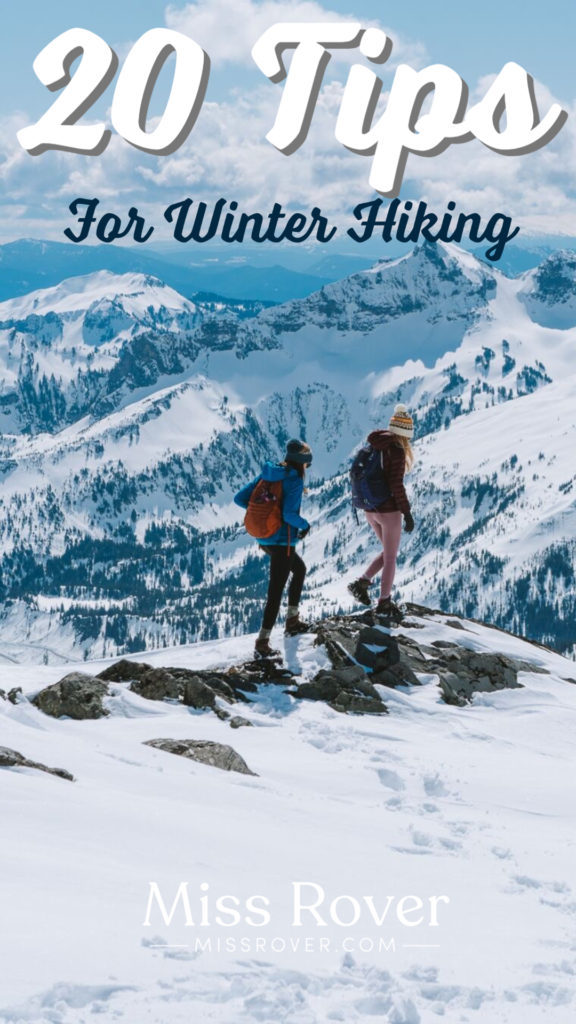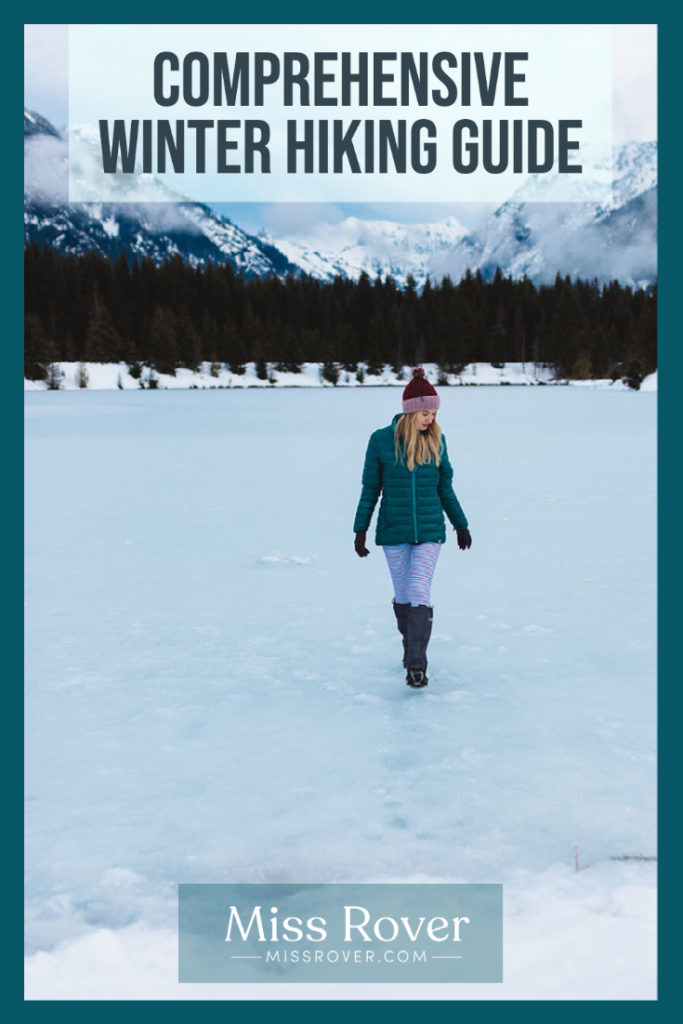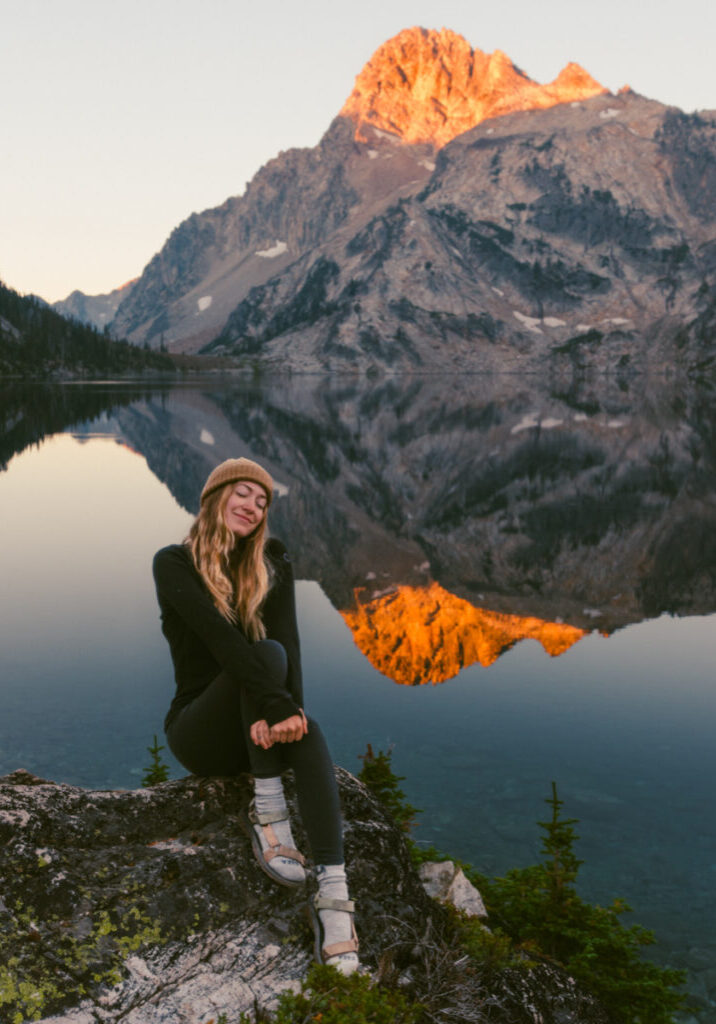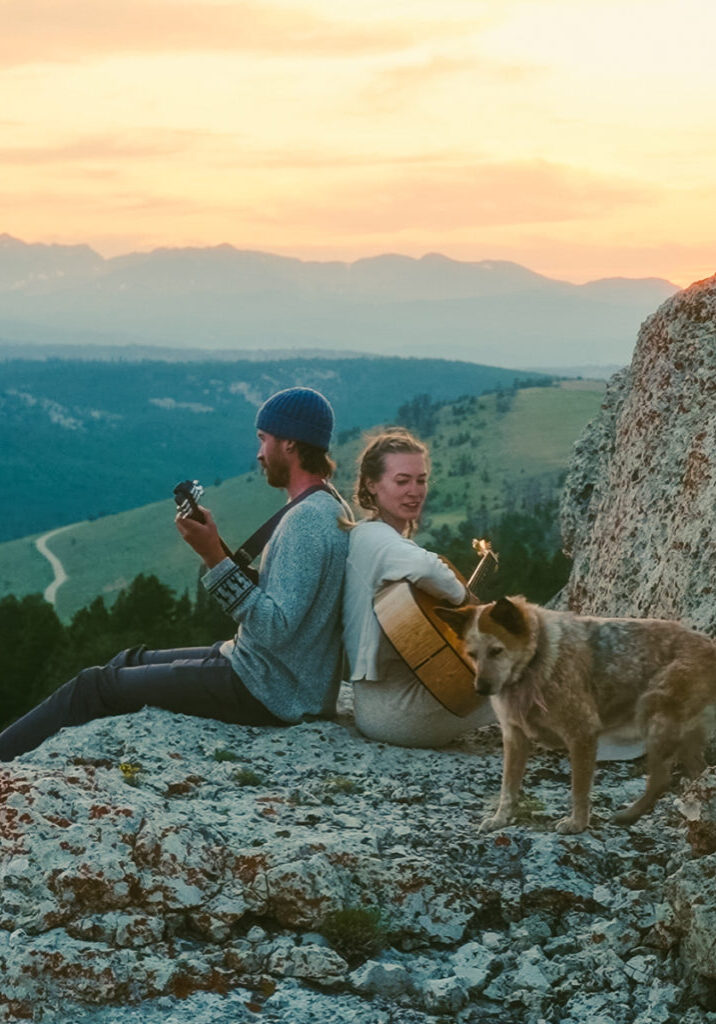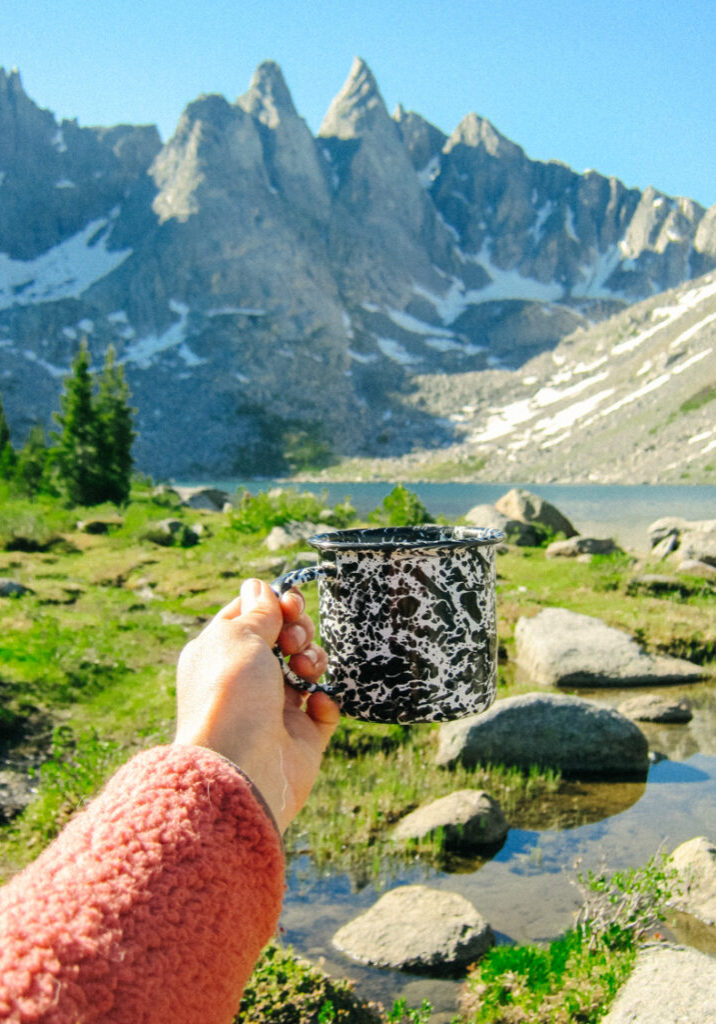| Filed in Hiking & Backpacking | Disclaimer: I use affiliate links and may receive a small commission on purchases. | Leave a Comment
Summary: winter hiking gear guide, safety essentials, Winter Hiking for beginners, gear guide for winter hikes, preparation, winter car safety and more.
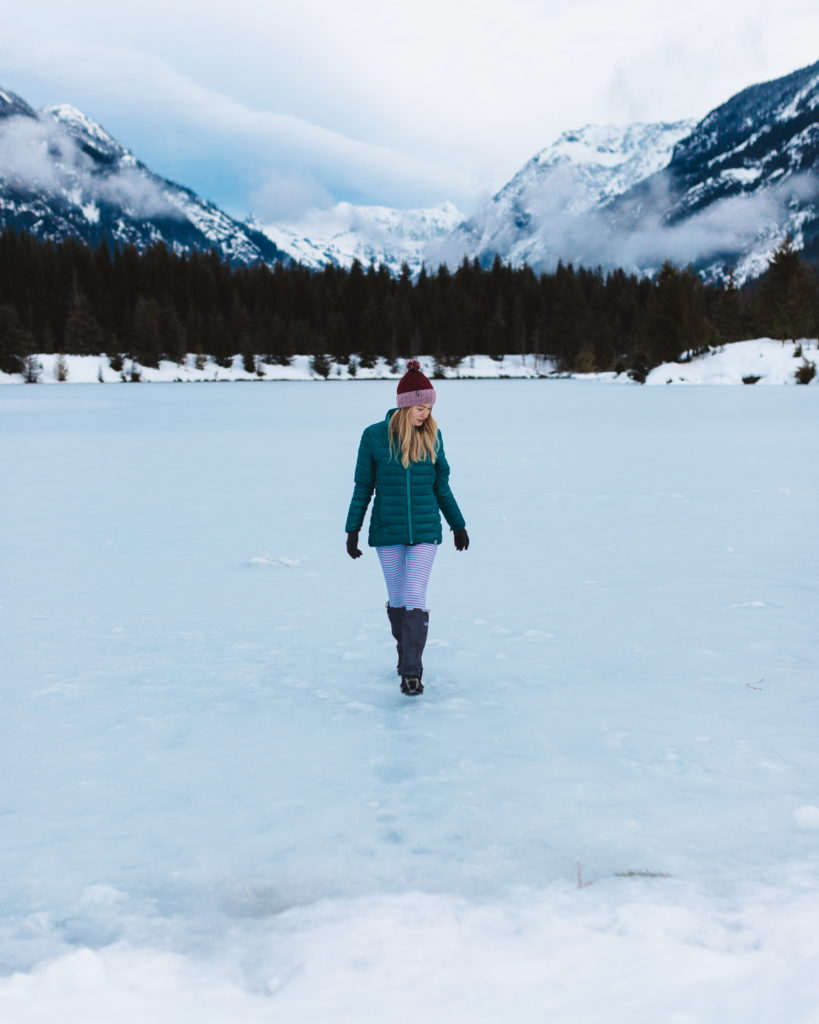
I remember the first winter I spent in Seattle. I didn’t realize it was still possible to go hiking in the mountains with the right knowledge, gear, and preparation. That first winter I spent so much time learning what winter hiking gear to get to stay warm, as a person that runs very cold, and how to feel confident going onto trails that are often covered in snow!
Do Your Homework: Winter Hiking for Beginners
1 Research your trails.
I always check the reviews on AllTrails or the local hiking pages (WTA.org in Washington). A large database of people are contributing to these platforms and it can give you good insight on what to expect (road conditions, snow levels).
Check with your community on local hiking Facebook groups as well or browse social media for the latest images of a place (I have definitely stalked lots of accounts to see if it was a throwback picture or a picture from earlier that week)
Important: make sure to check the date of the last review. If there are no posts within the last week, it may be that the hike is inaccessible.
Confirm your research. An added step for safety would be to call the nearest ranger station or park office to get more information on the hiking conditions from them as well.
Have a backup plan or be prepared to turn around without hiking if the trail is not what you are prepared for.
Check out my blog How to Find the Best Trails if you need inspiration!

2 Check the Weather
This is so important! During the winter, storms can roll in very quickly and cause unsafe hiking conditions and unsafe driving conditions.
My Two Favorite Websites to Check the Weather:
Important: Check to see if there was any major snow the night before your hike! This could change the accessibility of the hike and the conditions you researched.
Winter Hiking Avalanche Safety:
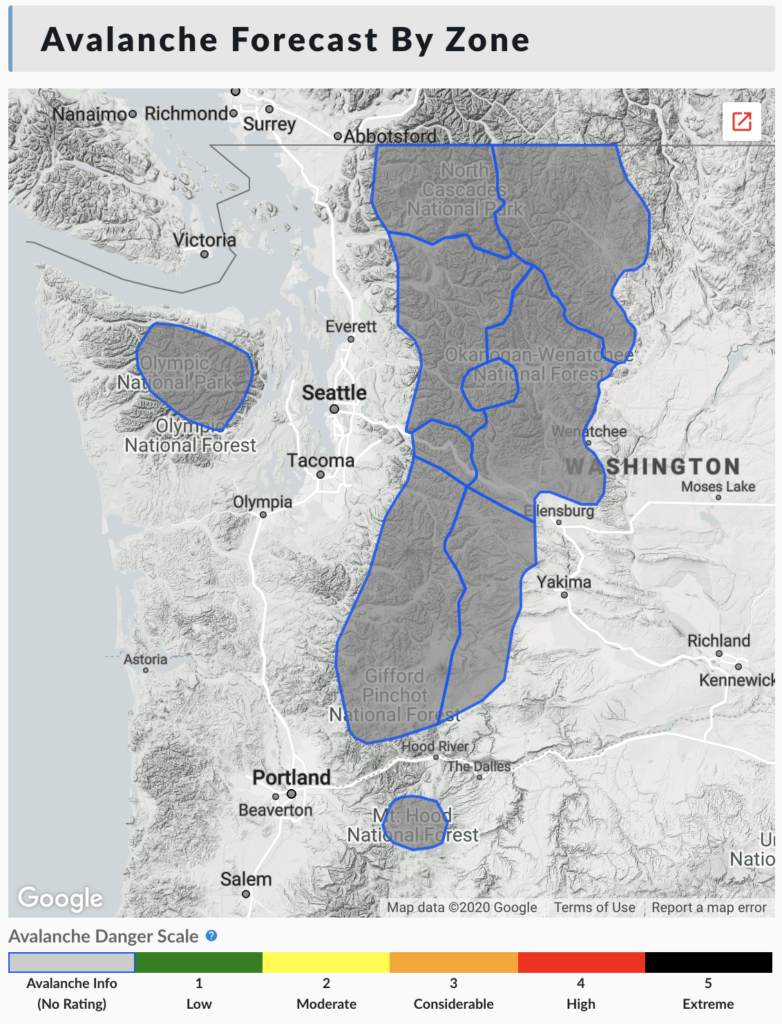
Check local avalanche centers HERE. They give you updated information on any avalanche risk. Especially important in the spring time when snow is starting to melt and move.
REI has a great guide on Avalanche basics like recognizing avalanche conditions, avalanche gear and red flags. Read the guide HERE
The two red flags I look for in my hiking research are:
- Major Weather Changes: Recent rain or snowfall, strong winds, and fast temperature changes.
- Recent Avalanches: Check on the Avalanche center websites HERE
Winter Hiking Gear Preparation
This section will cover everything you need to know from vehicle preparedness and what to pack.

1 Prep Your Vehicle
Getting to the trail and back home safety is a major part of winter hiking! Here Is some essential winter gear I recommend you keep in your car!
- Tire Chains. These will provide maximum traction on icy roads.
- Shovel. Keep a shovel in your car for any emergencies like digging out your car, or even take this winter hiking/backpacking for avalanche safety or digging out a campsite. This shovel weighs in at just over a pound.
- Emergency Blanket. These are an inexpensive item to keep in your car in case (God forbid) your car doesn’t start or breaks down in frigid temps.
- Handwarmers
- GPS. I use the Garmin In Reach Mini and am SO glad I made this investment. It has an SOS feature that contacts a 24/7 rescue monitor, weather monitoring features, messaging (even in areas of no cell signal) and location tracking and sharing. The location tracking is a BIG DEAL if the trail becomes white out from snow and you can no longer retrace your steps. This is good for in the car and on the trail.
- Portable Car Jump Starter. Y’ALL. I can’t even begin to tell you how many times this has saved me. This very portable charger stays in my car always in case my car battery dies or someone else is in need of a jump!

2 What to Pack in your Day Pack when Winter Hiking
The things you put in your bag are what you’ll have to save yours or someone else’s life. During winter hiking season, this is what I think about when asking myself “do I REALLY need to pack the 10 essentials?”. YES.
The 10 essentials:
1 Navigation: GPS. I use the Garmin In Reach Mini as mentioned above. I also download maps on AllTrails ($30 a year subscription) This allows you to see your location in real time on the map.
2 HeadLamp. Always pack extra batteries
3 Sun Protection. Sunscreen, SPF chapstick, sunglasses, sun protective clothes. The first winter hike of the season I usually forget that the sun is even more damaging reflecting off the snow. Protect yourselves!!
4 First Aid Kit. This is essential for ANY hike! This kit linked has all the essentials.
5 Knife. Trust me, I use mine more than I thought I would.
6 Fire. Bring the means to start an emergency fire for warmth/drying out. A simple lighter will do and fire starters are so so valuable in wet snowy conditions. On some mountaineering sites, a camp stove like a JetBoil is also recommended for emergency heat and water sources.
7 Shelter. In most cases of day hiking this could be an emergency bivvy. They are surprisingly light and inexpensive.
8 Extra Food. Recommendations: Jerky, trail mix, protein bars. The rule of thumb is to bring enough food for an additional day.
9. Extra Water. I usually fill up a couple Liters of water in my CamelBak bladder. The 3L is wonderful as it allows for extra water on longer trips, but can also be used for only 1L of water if I choose. I alway bring means of obtaining purified water. My Sawyer Mini Water Filter is SUPER lightweight and ensures I’ll never have to worry about being short on water. HOWEVER, in below freezing temps, the filter can freeze and become useless. Read this thorough article on water purification in the winter HERE.
10. Extra Clothes. I always wear layers and have warmer layers in my bag in case temps change. Make sure to bring an extra pair of socks in case your feet get soaked in the snow!
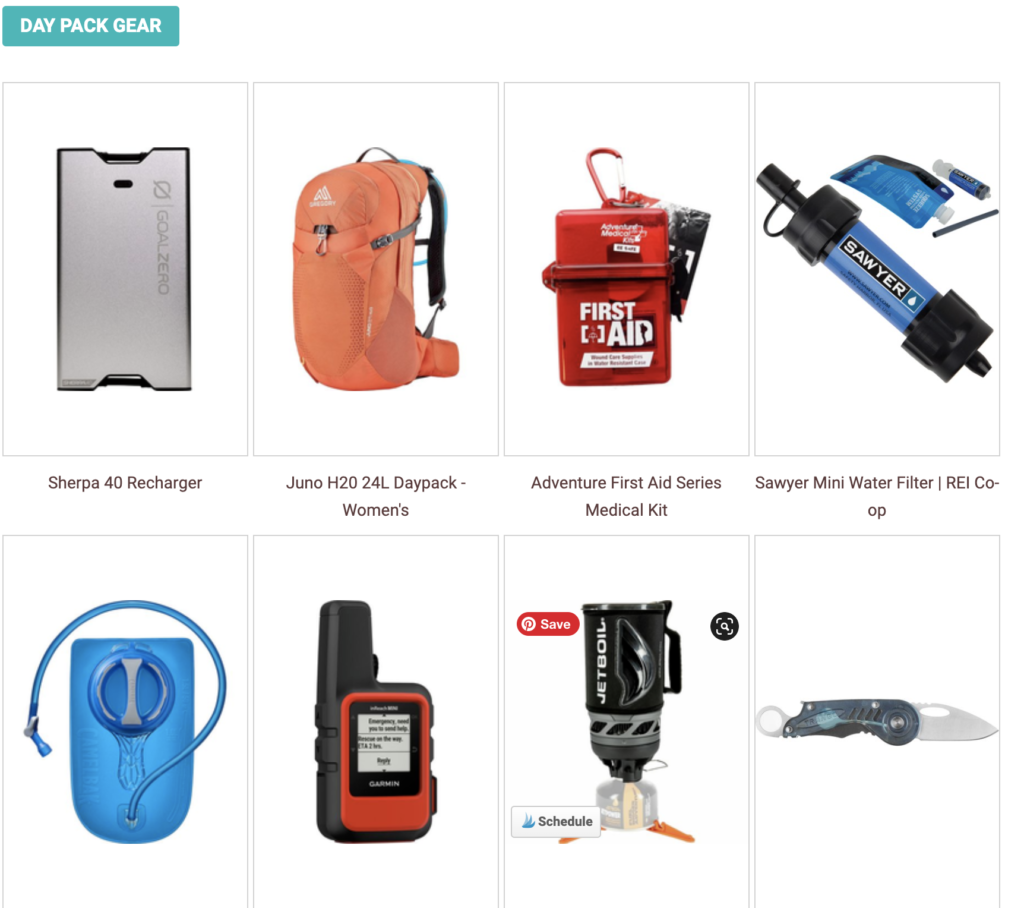
The Day of the Hike
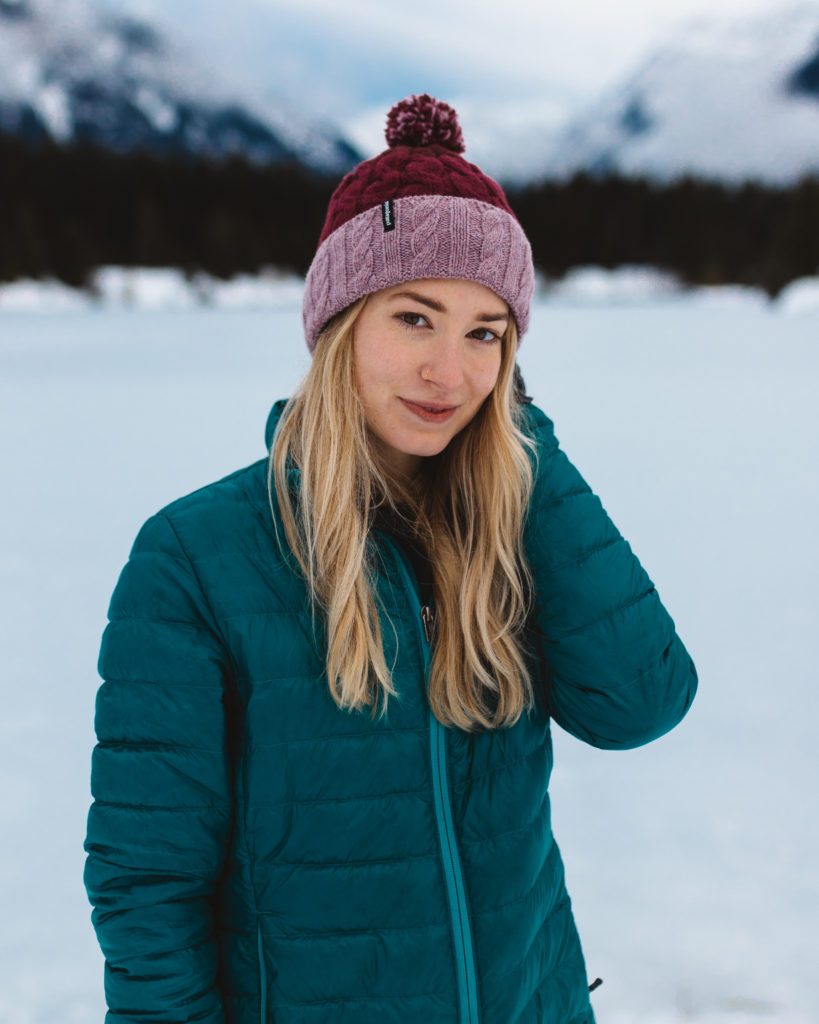
Start Early!
At least in the winter sunrise isn’t as early! It’s important to hit the trail early for a couple reasons. One, there’s limited daylight in the winter and you’ll want to have plenty of time to make it out and back safely. Two, the snow tends to get slushy and softer as the day goes on making things more slick and potentially dangerous.
Eat Breakfast
I forget how much harder it is to hike in snow. Whether you’re wearing micro spikes, snowshoes or just your hiking boots, hiking through snow is so much extra work and burns extra calories. Bring high protein/calorie snacks on the trail if you feel your energy fading.
Dress your Best
Alright. This is what gets me through winter hiking. If I am cold, I am not having a good time. There’s that saying “there’s no bad weather, just bad gear.”…and maybe it’s partly true.
- Base layers!! Let me sing the praises of wool! Wool provides warmth and is moisture wicking which is so so important in cold weather.
- Fleece Lined Leggings. These Smartwool Merino Sport Fleece Colorblock Tight are the perfect leggings for any winter adventure.
- Rain Pants. While not very fashionable, these will keep you warm and dry.
- Waterproof Hiking Boots. You’ll want something waterproof to keep your feet dry and insulated as well as something with good tread to keep you on your feet. I highly recommend THESE by Salomon.
- Down Jacket. You’ll want to consider what “fill” the jacket has. This is a fill count noting how much down is in the jacket, and therefore how warm it will be. My Arcteryx Cerium LT Jacket has 850 fill and is hands down the best purchase I have made for ALL of my trips.
- Shell Jacket. My Arcteryx shell Jacket offers breathability, waterproof, and wind protection. I am significantly warmer and dryer with this layer.
- Gaiters! Gaiters are a game changer. They fit over your shoe and keep snow from going into your shoes when you step into deep snow.
- Wool Socks. And pack an extra pair!
- Beanie! Finally something cute and fun! I love this colorful one HERE
- Gloves/Mittens. Alright. So I was trying to get by with these flimsy non waterproof gloves and they’d always end up soaked in 10 minutes and my hands would FREEZE. I recommend at least getting mid-weight gloves like THESE.

Winter Hiking Gear
Gear is just as important for winter hiking. Especially for trail traction!
- Microspikes! These are a life saver and luckily don’t break the bank. Some popular winter trails get so packed down that the snow becomes solid ice. The simple to put on spikes will keep you from falling!
- Trekking Poles. These are kind of a big deal. They have kept me upright so many times and help propel me forward if conditions are getting slushy.
- Snowshoes. I bought my snowshoes on Amazon. They were way less expensive and have held up really nicely! Rentals cost anywhere from $20-$40 a day. I got my moneys worth in just 2 uses!
- Portable Battery Charger. This is important if you plan on using your phone for any type of navigation and also just to keep your phone charged in case of an emergency. Cold weather will often drain your battery MUCH faster.
- Jetboil. If you’re feeling fancy, make yourself tea, or soup or hot cocoa at the summit!
If you’re looking for some winter hiking inspiration, check out my blog West Coast National Parks to visit in the Winter
Pin For Later!
